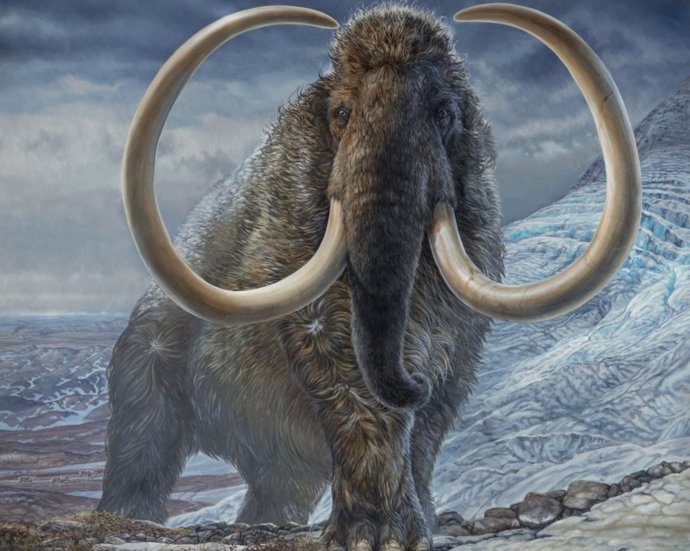File – An adult male woolly mammoth – JAMES HAVENS – Archive
June 27 () –
The last population of woolly mammoths was isolated 10,000 years ago on Wrangel Island, off the coast of Siberia, when sea levels rose and separated the mountainous island from the mainland.
A new genomic analysis reveals that the isolated mammoths, which lived on the island for the next 6,000 years, They originated from a maximum of 8 individuals, but grew to 200-300 individuals in 20 generations.
The researchers report in ‘Cell’ magazine that the genomes of the Wrangel Island mammoths showed signs of inbreeding and low genetic diversity, but not to the point of being able to explain their final (and mysterious) extinction.
“We can now confidently reject the idea that the population was simply too small and that they were doomed to extinction for genetic reasons,” says lead author Love Dalén, an evolutionary geneticist at the Center for Paleogenetics, a joint collaboration between the Swedish Museum of History Natural and Stockholm University. “This means that it was probably just a random event that killed them, and If that random event hadn’t happened, we’d still have mammoths today.“.
In addition to shedding light on woolly mammoth population dynamics, this analysis of Wrangel Island mammoths could help inform conservation strategies for the currently endangered animals.
“Mammoths are an excellent system for understanding the current biodiversity crisis and what happens from a genetic point of view when a species goes through a population bottleneck, because they reflect the fate of many current populations“comments first author Marianne Dehasque of the Center for Paleogenetics.
To understand the genomic consequences of the Wrangel Island bottleneck on the mammoth population, the team analyzed the genomes of 21 woolly mammoths: 14 from Wrangel Island and 7 from the pre-bottleneck mainland population. In total, the samples spanned the last 50,000 years of the woolly mammoth’s existence, providing a window into how mammoth genetic diversity changed over time.
Compared to their continental ancestors, Wrangel Island mammoth genomes showed signs of inbreeding and low genetic diversity. In addition to low overall genetic diversity, they showed reduced diversity in the major histocompatibility complex, a group of genes known to play a critical role in the vertebrate immune response.
The researchers showed that the genetic diversity of the population continued to decline throughout the 6,000 years that mammoths inhabited Wrangel Island, although at a very slow rate, suggesting that population size remained stable until the end. . And although the island’s mammoth population gradually accumulated moderately harmful mutations over its 6,000 years of existence, The researchers showed that the population was slowly eliminating the most harmful mutations.
“If an individual has an extremely harmful mutation, it is basically not viable, so those mutations gradually disappeared from the population over time, but on the other hand, we see that mammoths accumulated slightly harmful mutations almost until they became extinct,” he notes. Dehasque. “It is important that current conservation programs take into account that it is not enough to return the population to a decent size; It also needs to be actively and genetically monitored because these genomic effects can last more than 6,000 years.“.
Although the mammoth genomes analyzed in this study span a long period of time, they do not include the last 300 years of the species’ existence. However, researchers have unearthed fossils from the late mammoth period and plan to conduct genomic sequencing in the future.
“What happened in the end remains a mystery: we don’t know why they became extinct after having been more or less well for 6,000 years, but we think it was something sudden,” Dalén stresses. “I would say there is still hope of finding out why they became extinct, but there are no promises.”














Add Comment